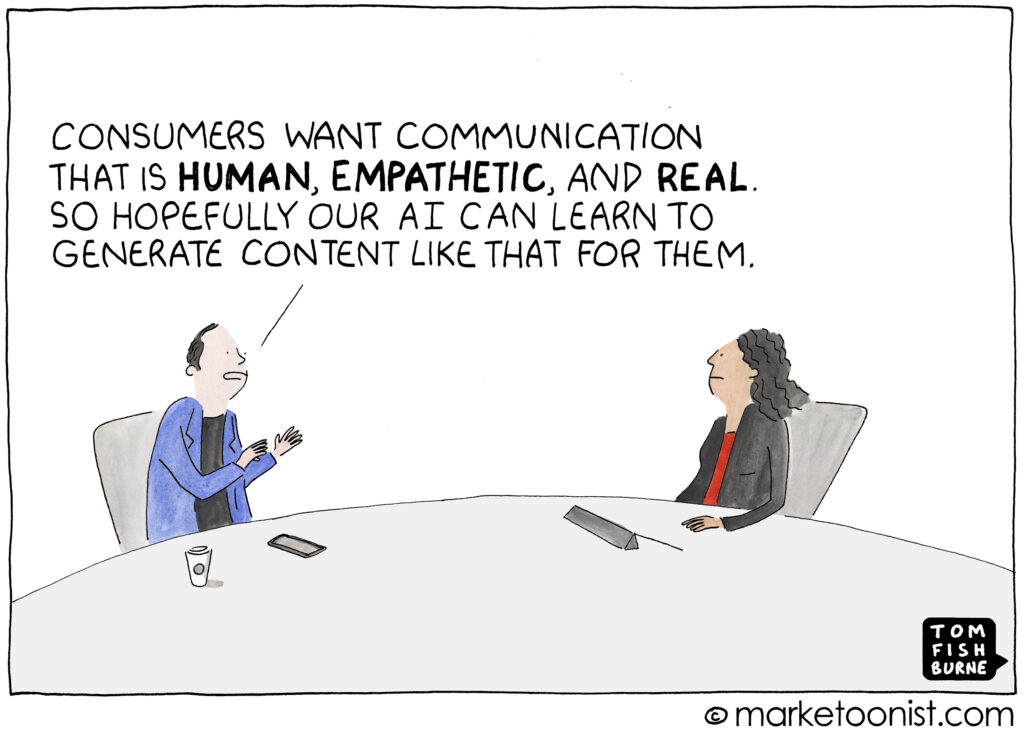Five Key Insights Into Consumers’ Use Of Generative AI
As is often the case with poorly understood tech that promises to change the world, consumers worry about its ethics and human impact, yet a vast majority of these skeptics will use (and love) generative AI in 2024, whether they know it or not. Like it or not, know it or not, genAI will seep into people’s lives seamlessly and invisibly.
How is consumer use of generative AI expanding? Tech companies are embedding genAI capabilities in their platforms and tools and in the apps and products that people use every day: Adobe Photoshop, Google’s Gemini or Circle to Search, Microsoft’s LinkedIn, Samsung’s Galaxy S24, and many more. In November last year, Forrester predicted that half of global firms will experiment with customer-facing genAI.
While companies race to incorporate AI internally and externally, consumer use of genAI is still in its infancy. Consumers are apprehensive: Although they see the utility of genAI, they worry about its ethical implications. My colleague Audrey Chee-Read and I just published a brand-new report, The State Of Consumer Usage Of Generative AI, 2024, and have been investigating consumers’ genAI usage and attitudes. Here are a few trends to note:
- US consumers are ahead of those in other countries due to sluggish regulations. For genAI, consumer usage is higher and consumer attitudes are more positive in the US than in the UK, France, Germany, or Italy. Countries in the EU are introducing and enforcing new rules and regulations so that organizations adopt AI technology in reliable ways, while the US does not have any federal regulations around consumers’ AI usage. Large language models (LLMs) are also based on available training data, and much of that data is in English, inherently making the output of genAI platforms more effective for English-dominant countries.
- LLMs dominate genAI usage, with use focused on search-related tasks. Tools such as Bing Chat, ChatGPT, Google’s Gemini (formerly Bard), OpenAI’s DALL·E, and Snapchat’s AI chatbot dominate usage, but there are many smaller, unbranded native genAI tools in major platforms that consumers may not attribute to genAI technology, such as WhatsApp’s AI stickers or Spotify’s podcast translation.
- Consumers’ knowledge of genAI will continue to be disjointed. GenAI use cases largely dominate consumers’ understanding of it, but most consumers have not actually used genAI. A large volume of respondents fall into the “don’t know” category in response to questions about it. Among those who claim some understanding, however, one group is focused on the human-imitation nature of the technology, another is aimed at understanding its involvement in the creation of new information, content, and data, and a third group relayed negative associations rather than understanding.
- Consumers lack trust in genAI’s output quality and use by companies. Consumers lack trust in genAI in two main ways: 1) the accuracy of the results that the technology produces and 2) the ways that companies use the technology and data that consumers enter. Based on Forrester’s December 2023 Consumer Pulse Survey of online adults who had heard of genAI, only 29% agreed that they would trust information from genAI. Even more significant is concern about transparency, with 73% of genAI-aware online adults agreeing that companies should disclose when they use the technology to interact with them.
- Consumers see the utility of genAI but are torn about its potential effects. Consumers are split about how genAI will impact the future. Many appreciate its utility. Among online adults in Forrester’s December 2023 Consumer Pulse Survey who had heard of genAI, 50% agreed that genAI would make it easier to find information online and 43% agreed that genAI would make it easier to learn new things. There is less consensus, though, about the technology’s long-term effects: 45% of online adults agreed that genAI poses a serious threat to society.
My colleague Jay Pattisall is working on a new piece of research on how brands will leverage genAI and how they are actively building brand AI models (stay tuned!). Moving forward, brands will be able to automatically create custom content conversations with consumers, as per this excellent cartoon from Tom Fishburne (thanks, Tom, for allowing me to share your cartoon, and for anyone who does not follow his work, I recommend that they take a look at the Marketoonist):

Clients wanting to find out more on consumers’ perceptions of genAI and discuss implications for their business can read the full report here or schedule a guidance session.
We are also working on a new piece of research that looks into how genAI will change relationships with brands and consumers. Will brands become conversational through genAI-powered chatbots? What does that really mean? Is this a long-lasting solution in the form of a personal digital assistant — some sort of “algorithm of you” — that can interact with brands on your behalf? What are the risks of brand disintermediation?
If you’re interested in sharing your point of view or want to brief us on consumer-centric genAI projects that you’re working on, feel free to contact us.
